Self-Drive in Botswana Part 3: Moremi
This will be my last update-as-I-go post as we are done with our African safari adventures and will begin the long journey home tomorrow.
 Khwai river campsite with hippo
Khwai river campsite with hippo
We left Linyati with some sadness as the campsite alone was like watching the nature channel. The drive from Linyati was so long: 8 hours of driving to cover 70 miles of mostly off-road terrain. We made the drive slightly longer on purpose, as we detoured off the transit road to Khwai Safari Grounds, but that likely cost us only 30 minutes.
Khwai Safari Grounds isn’t technically in Moremi Game Reserve, but it borders it and shares a name with the north entrance game to the reserve. This was another beautiful site (“magical” as we say) on a pool with the obligatory hippo, plenty of waterfowl, and night visit from a honey badger. Look closely in the photo above and you’ll see the hippo passing close by our site after sunrise.
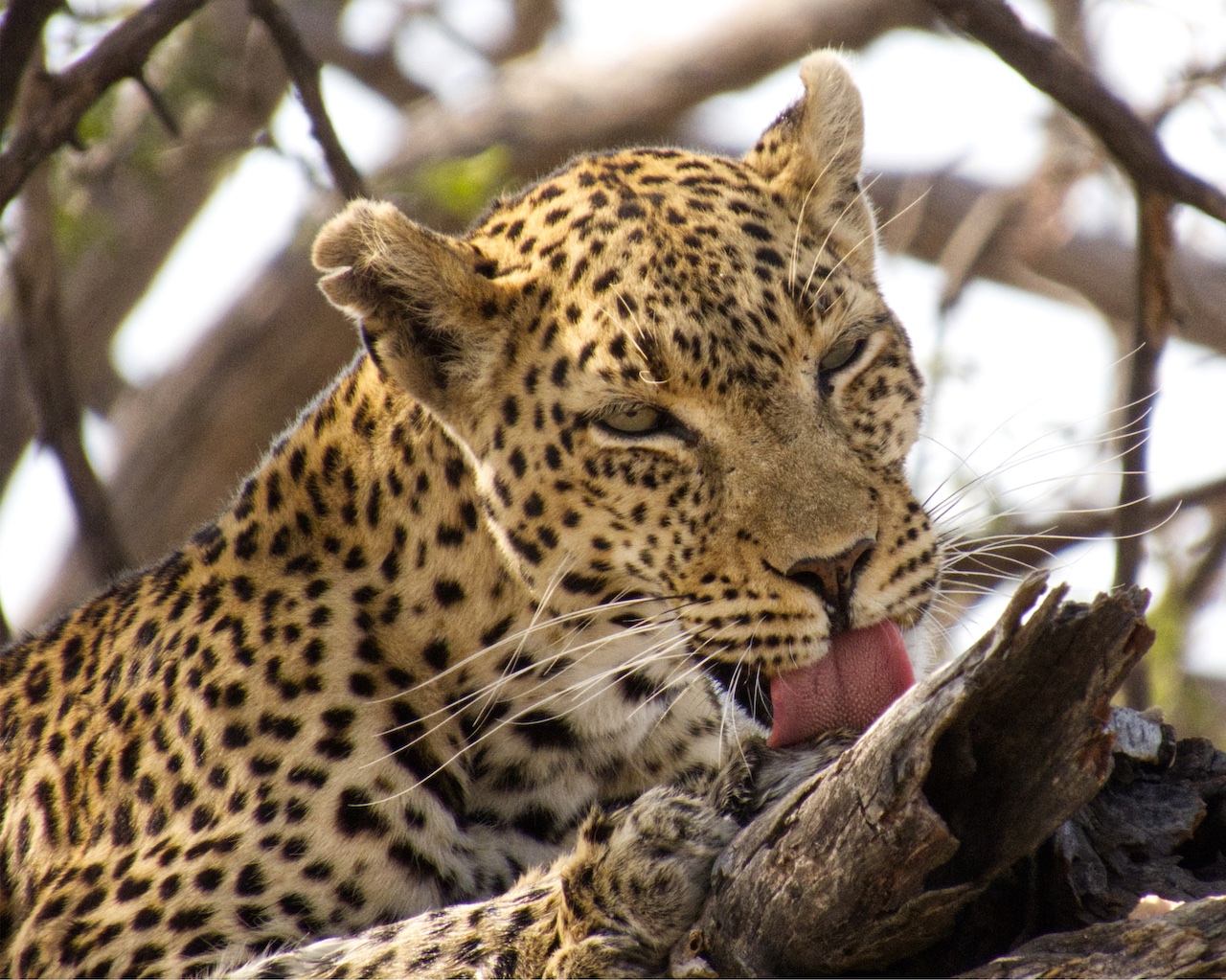 Leopard cleaning after meal
Leopard cleaning after meal
After a brief break from the big cats, while wandering around the windy streams and islands Ken chatted with a guide to see if he was about to do a river crossing at a spot we were considering. The guide said “yes I am, and I’m going to go see a leopard.” Ken asked “can we follow you” and he kindly obliged.
This leopard was at the end of their meal, knawing on the end of a leg and a hoof of what was probably an impala. We watched for 20 minutes or so, seeing the leopard transition to some house-cat-like self cleaning, then drop to the bottom crook of a tree to rest for a bit. We’ve been so fortunate to see so many leopards on this trip.
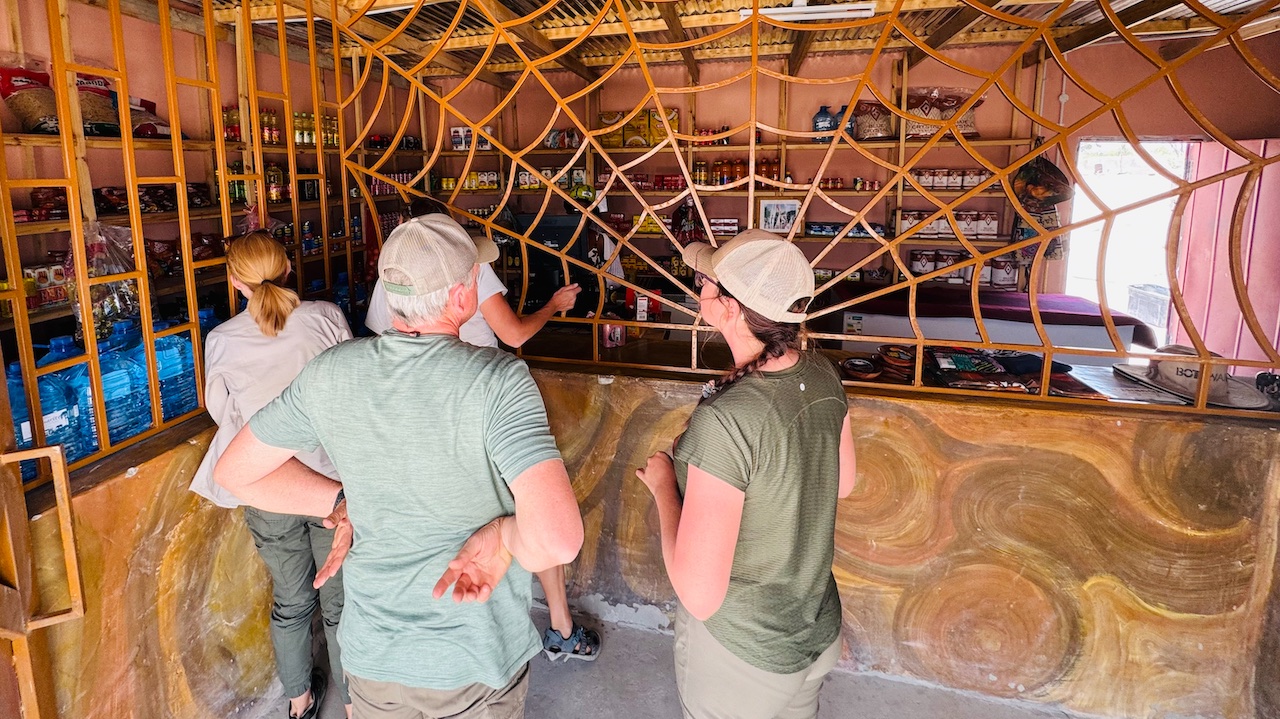 Resupply at Khwai tuck shop
Resupply at Khwai tuck shop
On the drive from our site to the Moremi north (Khwai River) entrance, we found a tuck shop (convenience store) with some much-needed resupply before we started our last leg.
We explored the other side of the Khwai River from this campsite, seeing many beautiful antelope, some new birds, and plenty of elephants. Always plenty of elephants.
After another long drive from Khwai to Xakanaxa camp at the northwest end of the reserve (almost 6 hours to cover 34 miles) we had our new home for two nights to revisit some of our favorite areas of Moremi that we visited while wild camping there. We were so hopeful to get another glimpse of the lion family and 8 cubs.
On arrival Ken noticed a boat launch and guide service right next to our campground and suggested we see about a boat ride in the afternoon on the Okavango Delta. It would save us from another hot, dusty, bumpy Land Cruiser ride and preserve some of the precious diesel fuel we were concerned about running out of.
 African pygmy goose
African pygmy goose
Our guide Blade took us out on the delta for 2.5 hour, 15 mile cruise. There weren’t any big sightings, but it was such a relief to have the cool breeze off the water and let someone else drive for a bit. We did get a new-to-us waterfowl sighting: the African pygmy goose.
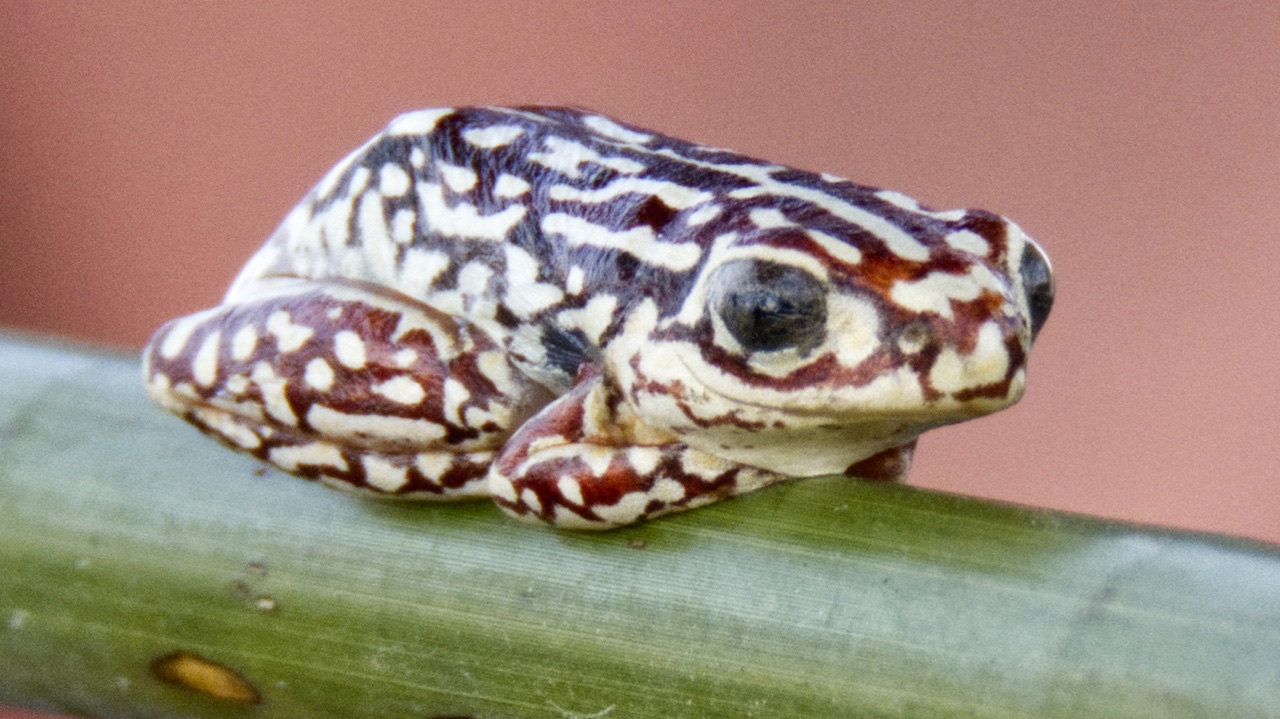 Angolan reed frog
Angolan reed frog
At one point Blade pulled up a reed and asked “see this frog?” It was so tiny! This is the Angolan reed frog, one of many reed frogs that make a chorus on clicks and chimes on the water, first heard by us at the Khwai Safari Grounds.
On our first night at the camp, Kelin spotted a crested porcupine at dusk just by the tall grassline near our site. This guy was huge! Sadly, couldn’t get a photo. And for reference, in case anyone wants to check my claim that “this guy was huge!” you should first note that this is one of the largest rodents in the world. A giant rat with spikes!
 African wild dog
African wild dog
For our full day at Xakanaxa, we planned to spend the day away from camp given the long driving involved to get to Third Bridge and points beyond. The day started with an amazing discovery (on our own) of three African wild dogs approaching from a wetland area. We were drawn to investigate by a herd of impala sprinting away, not a usual scene unless some predator is in their midst. We tracked them for a while then wandered around, looking for cats (any cats!), a secretarybird, but also just wanting to explore and show Kelin the beauty of Moremi. We struck out on our primary goals but had a great adventure.
And, as I’ll share in another post, we discovered (a few days later) that we did encounter a lion that afternoon.
Departing Xakanaxa, we took the long road back towards the Moremi south gate, passing through Third Bridge and taking a side trip to hit what might be the only watering hole in the entire southern part of Moremi. We had visited before and had to do some ad-hoc off-roading to find a way in there, but the visit was worthwhile. All-in-all, this was a 9 hour, 55 mile drive.
 Campsite at Moremi South Gate
Campsite at Moremi South Gate
We had low expectations for Moremi south gate, having been to the location before and knowing how dry this part of the park is. Easy to forget though is that campgrounds have water, the water leaks out, and this will attract animals. We were immediately greeted with a dysfunctional elephant family unable to share the scarce water there, some warthogs, and some interesting new birds.
The next morning, after our final night of sleeping in our truck tents, we heard from the staff that there had been lions wandering through and getting some water early in the morning. We didn’t have firm plans for a game drive that morning, but we all agreed that it would be worth our time to explore a bit.
We first drove north back into the park a bit, but after about two miles we turned around and took the border (eastern edge) transit road out and left the park. We pushed our luck a bit and took an access road into the adjoining concession, thinking that we could escape it to west and get back into the park and by legit again. But Karen spotted… lion tracks. Julie and Karen each decided that there tracks going both ways, giving us hope that they might be nearby.
We drove in as far as we dared into the concession, then started our way back out. I was focused on looking for birds (I’m just a few shy of 200 total new species identified in Africa) when Julie said “I think I see a lion” and handed me the binoculars. Karen had noticed about the same time. I confirmed, and we drove in off the road a bit and found two adults under a thorny tree (very hard to see them even up close), then under a tree nearby there were eight (we think) cubs and two more adults.
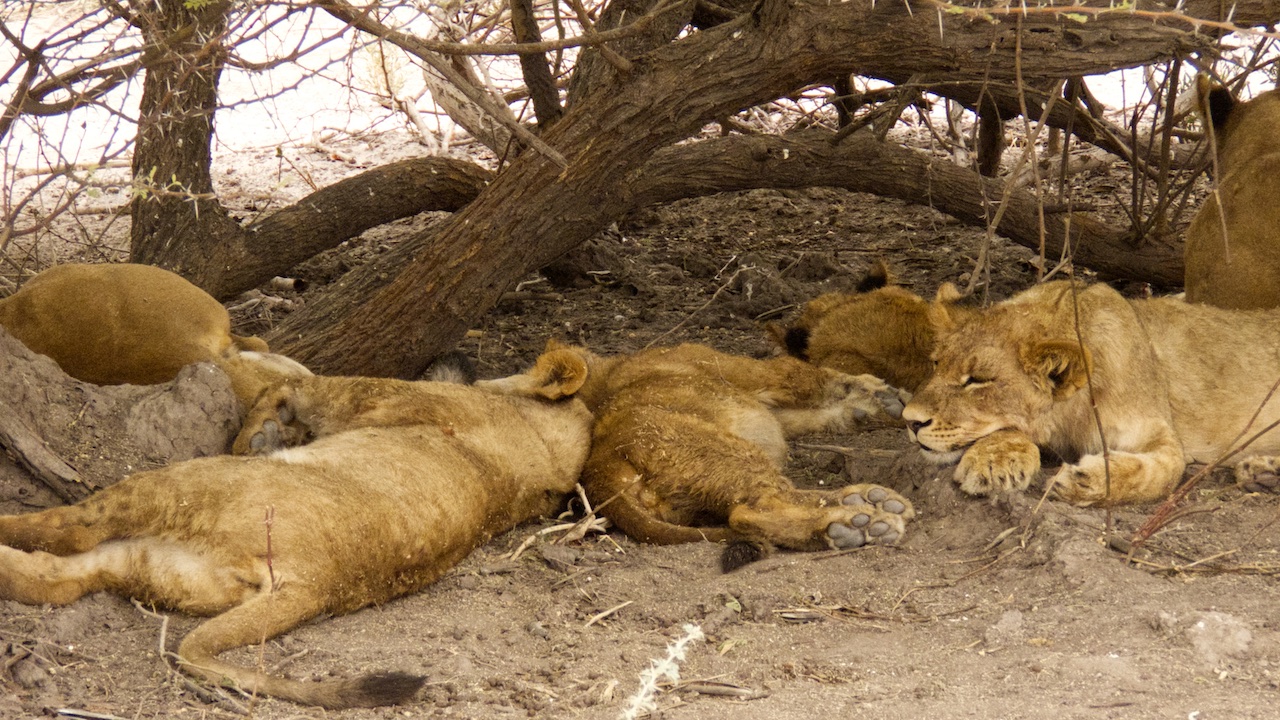 Lion cubs sleeping
Lion cubs sleeping
They were all very chill, maybe had eaten recently, and were not very interested in us.
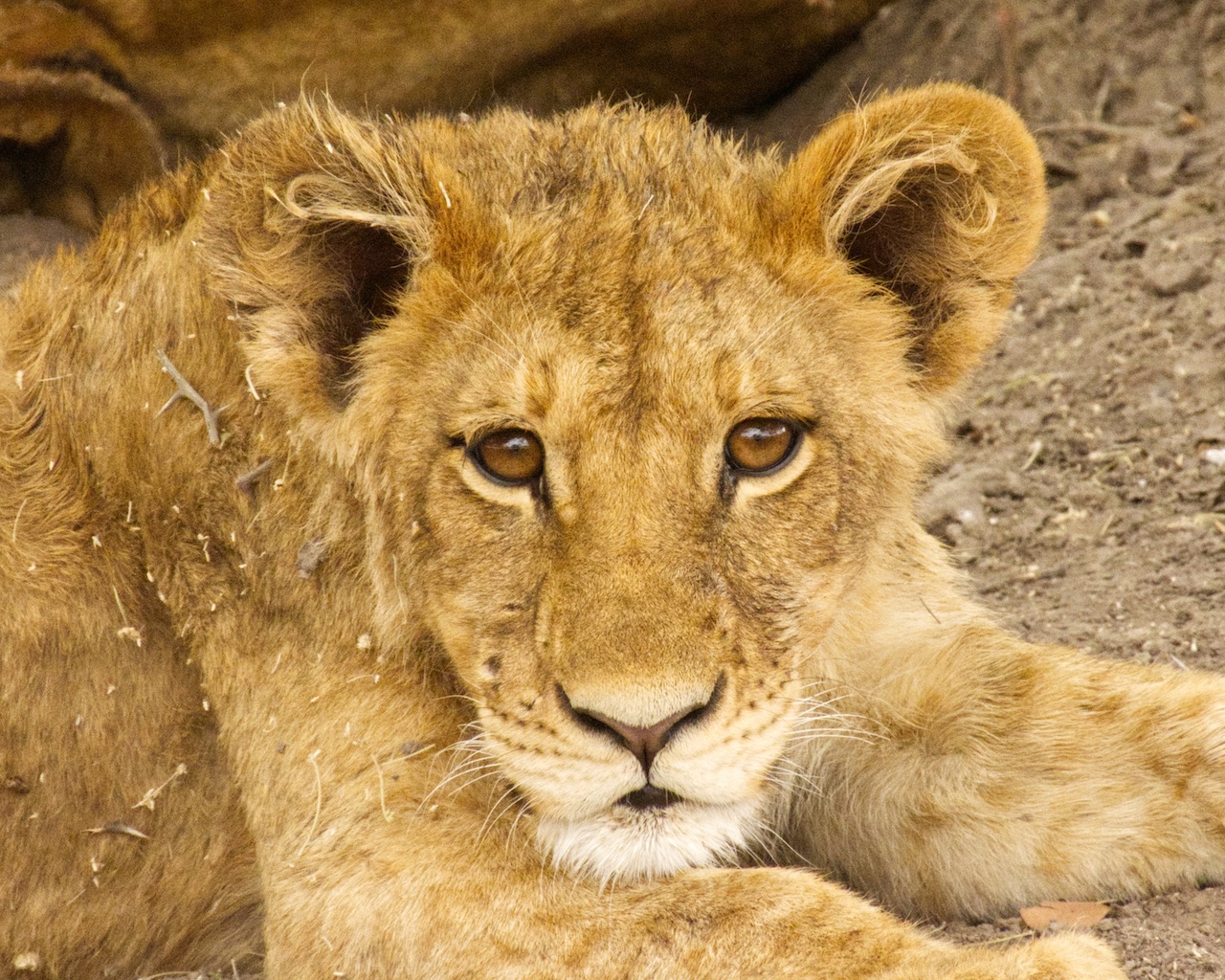 Curious lion cub
Curious lion cub
Except for this little guy who looked up at us and seemed a bit puzzled, or maybe curious. We anchored ourselves for a while, with a few other vehicles coming by (likely seeing us parked there). We also directed another group of four self-driving that were at the south gate back to the viewing. A very special way to end our safari adventure.
For our last night we are taking a breather and staying in Thamakalane River Lodge on the outskirts of Maun. We’ve been able to shower, hang out by the pool, and prepare for our long journeys onward. Four of us will return home to the USA, the fifth will continue on with more wildlife adventures near the equator.
I’m going to write several more posts on the trip. I need to share more on the self-driving experience, lessons learned from packing and preparation, my photography and birdwatching experience, and maybe a few more.
